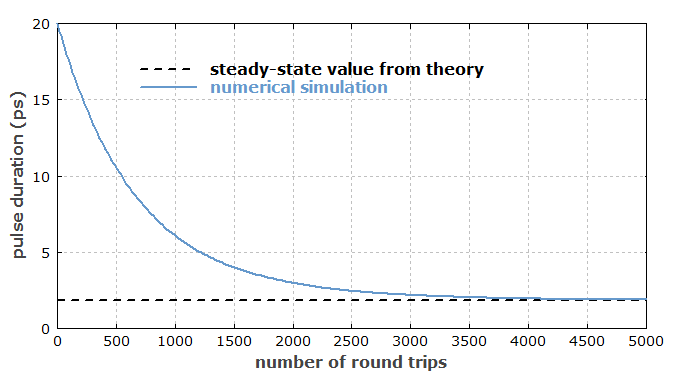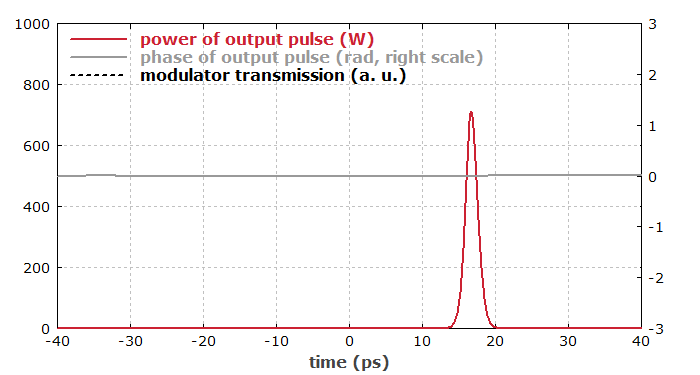RP ProPulse – Numerical Simulation of Pulse Propagation
| Overview | Purpose | Model | Interface | Demos | Versions |
Example Case: Passive Mode Locking
In this simple example, we consider an passively mode-locked laser. The laser resonator is described in the script as follows:
resonator: ring * OC: T_out = T_OC * Crystal: gain(l) = g(l) [P_sat_av = P_sat_g, KK = 0] * SESAM: satloss = dR_S [E_sat = E_sat_S, tau = tau_S] resonator end
This refers to some variable values, the definitions of which are not shown here. Here, the gain function g(l) has a bandwidth of 5 nm, the SESAM has a modulation depth of 1% and the output coupler has a transmission of 5%. For simplicity, we have ignored the effects of chromatic dispersion and the Kerr nonlinearity.
The initial pulse duration was chosen to be longer than in the steady state. It is found that the steady-state value of the pulse duration agrees with the result of a theoretical paper, see R. Paschotta, Appl. Phys. B 73, 653 (2001), eq. (6).

Also, we can see the temporal pulse profile after 5000 resonator round trips (which are calculated within a few seconds on an ordinary PC):

The pulse has drifted away from t= 0, because the slow saturable absorber always attenuates the leading wing more than the trailing wing.
